Can we make enough breathable air in our future MARS colony? - Colonization of MARS Series
This is the start of a scientifically backed series, in which I will combine basic science everyone should learn with data extracted from the main science articles on the matter, trying to assemble a Mars Colonization Handbook that should be easy for everyone to read. And stir your curiosity about the mysteries of science and space.
I know everyone on Steemit loves series for the wrong reasons, but I am a huge space geek and will actually try to gather a massive amount of information into something that would take me a couple of weeks/months to fully document and format.
The Martian atmosphere is 100 times less dense than Earth's, with 96% of it being Carbon Dioxide (CO2), 1.93% being Argon (Ar), 1.89% being Nitrogen (N2) and 0.145 Oxygen (02)and less than 0.01% Carbon Monoxide (CO)
Earth - Mars atmospherical composition comparison:
How much Oxygen does a human consume per hour?
If a person breathes in 12 breathes per minute about 7-8 liters and air on Earth has about 20% oxygen and by the time you exhale, its saturation drops to 15%, it means that the body managed to extract those 5%. This is close to 550 liters per day (140 gallons), 23 liters (6 gallons) per hour, and 0.382 liters or 0.1 gallons per minute.
Keeping in mind that air is light, more specifically 1000 liters ( 264 gallons) would weigh 1.25kg (2.75 pounds), so the weight of the air needed for a person daily is close to 687 grams (1.5 pounds).
Knowing that we can easily realize that it is impossible to bring the air to the colony from Earth and that we should focus on producing it locally. But is it possible?
We have already done it, on the International Space Station
Before 2007, the International Space Station could house a maximum of three crew members at a time due to oxygen limitation and scrubbing capabilities of the orbited modules. But in 2007 a new experimental scrubber, called the Oxygen Generation System (OGS) was introduced in order to double the operational crew and increase the amount of scientific operations performed. The system works by collecting water from waste ( condensation - be it from sweat, humidity in the air exhaled, or from the equipment, wastewater and even urine) and converting it through a process called electrolysis, into hydrogen (H2). This module is called ECLSS and it was delivered in the Destiny Module,with a similar equipment being located in the Zvezda module, called Elektron.
What is electrolysis?
The process of using a direct electric current (DC) to drive an otherwise unlikely and unspontaneous chemical reaction. It can separate elements and the power input needed for electrolysis is called the decomposition potential.
For the ones interested in bettering themselves let's go deeper:
The process of electrolysis
By using the direct electric current, we can achieve expulsion or attraction of said electrons from the external circuit, basically achieving an interchange of atoms and ions. The products of the said reaction are often found in different physical states from the electrolyte and can be extracted though various processes as output. Two electrodes, named Anode and Cathode are separated by an electrolyte ( in our case a special polymer membrane or PEM).
- A reduction reaction occurs at the cathode, releasing electrons (e-)
- Electrons combine with the water(H2O)
- Hydrogen gas (H2) and hyroxide ions (OH-): 2H2O (l) + 2e- -> H2 (g) + 2 OH- (ag).
- Oxidation occurs at the anode, with the electrons moving from the water into the anode.
- Oxiygen gas is released (O2 and hydrogen ions (H+): 2H2O (l) -> O2 (g) + 4e- + 4H+
The Mars Oxygen ISRU Experiment (MOXIE) aboard the Mars Rover 2020
Mars Rover 2020 is the upcoming NASA's Mars rover mission. Set to launch in 2020 it is focused on finding ancient life on Mars, but the most important is the fact that it will carry a tiny experiment called MOXIE.
This is a small electrolysis equipment, at 1% of the real scale at which could be implemented to sustain a Mars colony.
MOXIE - Mars Oxygen In situ resource utilization Experiment - will produce as estimated of 22 grams of oxygen per hour using a complex electrolysis system. We can already see that this 1% scale model can almost produce enough for a single person, despite its small size (smaller than most computer cases).The full scale will most probably require either an isotopic generator or an extended solar panel field, with a backup isotopic generator due to the fact that sand storms take months to clear because of the thin atmosphere and low gravity.
MOXIE is a solid oxide electrolysis cell which means that under very high temperatures, ceramic oxides like yttria-stabilized zirconia (YSZ) and doped ceria can undergo a transformation into oxide ion conductors (O2-).Porous electrodes and a nonporous electrolyte are used to generate oxygen from CO2 permeating the cathodes and touching the electrode-electrolyte limit.
 Abstract, NASA, aug 2017.
Abstract, NASA, aug 2017.
By electrocatalysis and thermal dissociation, an oxygen atom is released from the CO2 molecule and picks electrons from the cathode to become an oxide ion (O2-) which is then transported to the anode by the DC applied on the external circuit.
The charge is transferred to the anode and though recombination is merged with another oxygen atom, forming O2 and diffuses out, thus completing the reaction:
2CO2 -> 2CO + O2
Another outstanding benefit of this procedure is that a steady source of oxygen is also needed for various propulsion systems. It is used as an oxidant for the Mars ascent and the subsequent return to Earth. Regardless of the method used, even the revolutionary CH4/O2 propulsion system, needs about 78% of its fuel mass to be the oxidizer, or close to 30 metric tons. If we would use the oxygen from Mars it would save the equivalent of 400 metric tons of Earth Launched Oxidizer for each launch, or about 5 heavy lift launches in our current rockets to land a rocket and bring it back home with cargo.
As for energy usage, according to their own documents, MOXIE needs 108W to produce 22g/hr O2. Another 40W to compesate for heat loss and 20W for preheating. Total energy use is 170W. This means that even the full scale model will be feasible even under the 17 kw for 100 people by using multiple stacked cells for even more efficiency:
The SOXE architecture is a stack of cells, arranged vertically like a multi-story building. The two MOXIE stacks each utilize 11 cells. An assembly of 100 stacks, each containing 20 MOXIE-sized cells, would produce >2 kg/hr of O2 with an energy investment of ~12 kW.
Taking into account the reduced pressure of Mars, another air compressor would be necessary to supply the 0.14 cubic meters per second at 7mbars. They are confident that using a three stage centrifugal compressor and another scrolling compressor could supply the needed volume at only a 38 kg additional mass and under 1.1 kW of power.
But there's more to be discovered in terms of oxygen generation
Another way to create oxygen on Mars is being developed thought the use of plasma. This is a very new study so for now it's theoretical, but its suggestion is that Mars with its high concentration of carbon dioxide is ideal for the experiment. Using a process knows as decomposition, the study, made by the universities of Porto and Lison and with the help of the Polytechnic University in Paris, shows that production of non-thermal plasma could efficiently produce oxygen.
The oxygen is generated by decomposition of CO2 by direct electron impact, by transferring their energy into vibrational excitation. This splits up the original CO2 into oxygen and carbon monoxide. This appears to be a very efficient method as the power required to do the split would be equivalent or even lower to the alternatives.
The cold atmosphere (210 degrees Kelvin) is an appropriate environment to induce a stronger vibrational effect than what could be simulated on Earth and the very low temperature also can slow the reaction thus giving more time for the molecule separation. The study author, Dr. Vasco Guerra said:
"The low temperature plasma decomposition method offers a twofold solution for a manned mission to Mars. Not only would it provide a stable, reliable supply of oxygen, but as source of fuel as well, as carbon monoxide has been proposed as to be used as a propellant mixture in rocket vehicles."
In the same article the solid oxide electroliser cells and the plasma dissociation methods are being compared, with the plasma being highlighted as being superior to MOXIE, although the MOXIE numbers being quoted in this comparison are greatly diminished purportedly because of its lower actual Martian efficiency.
Still this could prove a very reliable method of oxygen producing and with further scientific debate it might even be polished sufficiently as to take the lead.
Farming could also help
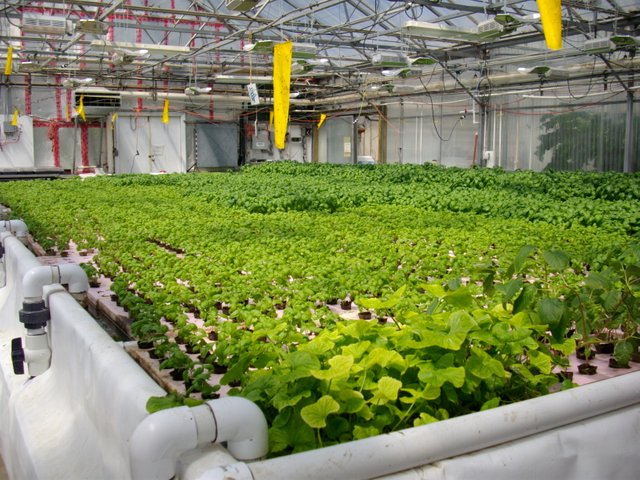 How a martian hydroponics farm could look like, supplying a backup of oxygen into the life support systems.Source: Wikimedia commons.
How a martian hydroponics farm could look like, supplying a backup of oxygen into the life support systems.Source: Wikimedia commons.Either through the use of hydroponics, the growth of plants without soil or by traditional farming in a temperature and pressure controlled environment, plants can supply small quantities of oxygen, although in the beginning of the colony it would be too resource intensive to worth taking into account just for oxygen production, but later, when the main bottleneck will be food production, the thought of using the cultures as a real means for oxygen supply in the colony will be taken into consideration. Perhaps through the use of GMO, plants could be designed to absorb or convert even greater amounts of gasses.
Terraforming in the long run
Some other preliminary studies cover the introduction of certain bacteria and algae, that could survive in the current Martian environment and if spread in a sufficiently big enough area could thrive and contribute to the gradual martian atmospherical composition change. However this is not allowed yet, under the Planetary Protection act. This is in place due to the fact that Mars has a high probability of hosting life which could be endangered by introducing new forms of life.
Further sources or related in depth information: The plasma in situ study, Moxie for Scientists, NASA's Math and Science @ work, Energy.gov fuelcell electrolysis, ISS ECLSS
Conclusion
We already have good technology in development and upcoming technology could improve our chances of producing greater quantities of oxygen in situ (on the surface of Mars). The energy needed to power these systems is reasonable and could be sent from Earth (photo-voltaic cells or ready-made solar panels and an isotope reactor for backup).
I have devoted a lot of time into structuring and documenting my articles so I could guarantee a fun and easy read. Also don't be shy to share the love of science with others, we still have a long way to go and we need future space engineers :)


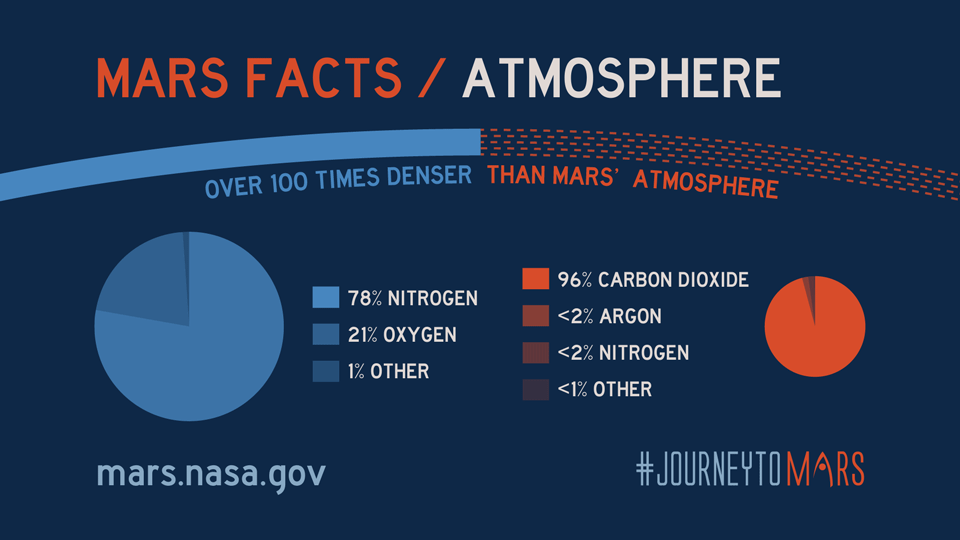


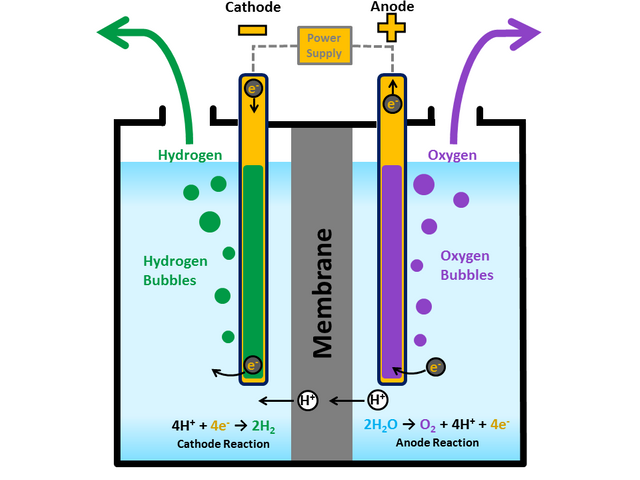
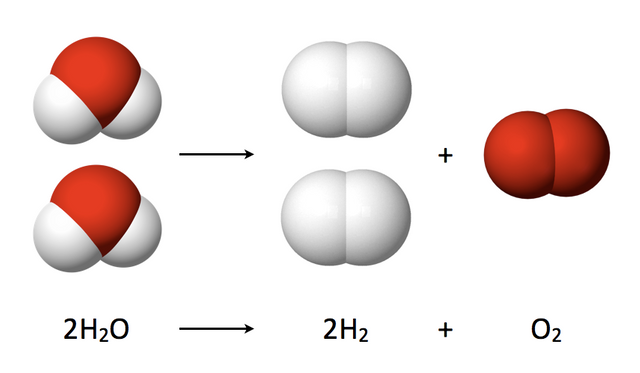

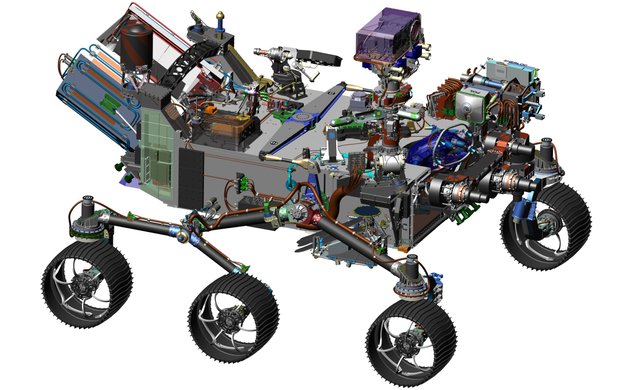
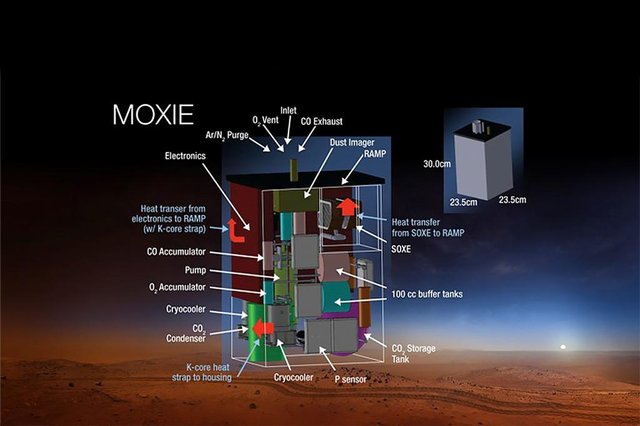


really looking forward for the next episodes of this series, I am really interested in learning what can we use on earth from furthering our research to get to Mars, in particular can we play with weather on Mars in order to learn something useful to use on earth ?
Of course. We can also use the CO2 to O2 scrubbers here on earth or any other CO2 decompositors to reduce our own footprint here. And many others. The people working in science and development are way too few now, we need ten times more people working on general R&D worldwide. And this should be possible if we let some of the easy jobs be taken over by AI and specialize on the rest. Utopic for now but it will be done!
well.. pretty sure no one is trying to modify human lungs to achieve that, not openly, but I do feel there are more than a few advocates for such enhacements
Incredibly well constructed and researched. Color this science nerd impressed!
Thanks! I will follow up soon!
oh, I was looking out for this: 3 Golden Nuggets a day - on Deflation. In this I study deflation which would relate to long-term planning in a new colony, however, Yuval Harari claims space travel would lead to a biological enhacement of our species which makes one think, although the possibility seems far far away, can we build our human bodies in such a manner that we do not need oxygen, but could use something else .. like 'Supercritical' CO2 which is mentioned in a study on alien life by space.com.
My main interest lies in how would we be able to reach one of these planets: 10 Exoplanets That Could Host Alien Life, if not by using every other planet on our way to them..
Ha! I like the way you think! Yes, if you read the list of future articles you will see I will get there :
You will enjoy the full series:
Can we make sufficient breathable air in our colony?
Can we find a source of water on Mars?
Can we feed the colony remotely?
Can we protect against radiation?
Can we survive the extreme martian cold?
Can we develop a transport system?
Can we survive micro gravity?
Can we get sufficient energy for the colony?
Can we survive the low atmospheric pressure on Mars?
Can we produce the fuel needed to get back to Earth?
Can our minds live under the constant stress and solitude?
Can we be self sufficient there and how long until then?
Can we thrive on Mars? Could we adapt?
Can we even think about terraforming?
Can we ever communicate in real time?Will there be a copy of the internet on Mars?
It's not exhaustive, just did my homework before.
It all started while waiting for Team Foundation to build my solution ( 35+ mins), but it soon took a life of its own as I need several continuous hours to write an article. I can also dream here :)
Ambitious list. Write a book and become the next Andy Weir :)
Greetings! You've been upvoted by @romaniaball. It's here to support Romanian users on Steemit and the @steemromania community. If you want to support us, feel free to delegate SP to @romaniaball. Help us build up the Romanian community! Join the SteemRomania Discord server! https://discord.gg/Jrg8w6U Salutari! Ați fost votat de @romaniaball. Este aici pentru a sprijini utilizatorii români pe Steemit și comunitatea @ steemromania. Dacă doriți să ne sprijiniți, nu ezitați să delegeți SP la @romaniaball. Ajutați-ne să construim comunitatea românească! Alăturați-vă serverului de discuri SteemRomania! https://discord.gg/Jrg8w6U
I love this and I think that very soon, we will probably have a colony in Mars but that can't be done until we have some presence on the moon to act as a launchpad to Mars.
As the moon is very close to Earth and minerals there can't help us build or fuel rockets, there is little the moon can do except for providing a low gravity test environment. We should have a base there, but the research options are limited.
Yeah, a launchpad on the Moon doesn't really make sense since it takes less energy to just send a rocket straight to Mars, than sending everything to the Moon first and then launching it. Only if we need serious ∆v but even then we can just send a rocket to orbit, refuel it in orbit and launch it where ever we need to.
Offtopic: You will grow quickly on steemit. You are already doing the right steps in creating your follower base! Cheers!
not sure everyone agrees with the moon launchpad, I like more the option of mining asteroids on our path there, or just use our current space stations.
That's an option, but I do wonder if it will cut some of the launch cost in the long run if we have a base on the moon or at least have some sort of orbital elevator so gravity won't be a problem. That being said, I'm no expert so it's just an opinion
I am quite certain there is a company Moon Express trying to achieve that, I guess they could use any support one can give to such a high mission.
It's impressing how they go about achieving the mission and ways of making it sustainable.
It would certainly be easier to deploy from the moon towards Mars than from Earth.
Interesting read @alexdory. I always wondered if it was possible and you shed some light on it. Keep up the good work. Upvoted :)
Thanks! I read your latest article and even promoted it before you stopped by. Have fun over there!
Full vote from me :) This is a splendid article and the kind of hard work you put into it shows in the ease of reading. I learnt a number of things today and would love to read what else is in your bag :)
You will enjoy the full series:
Can we make sufficient breathable air in our colony?
Can we find a source of water on Mars?
Can we feed the colony remotely?
Can we protect against radiation?
Can we survive the extreme martian cold?
Can we develop a transport system?
Can we survive micro gravity?
Can we get sufficient energy for the colony?
Can we survive the low atmospheric pressure on Mars?
Can we produce the fuel needed to get back to Earth?
Can our minds live under the constant stress and solitude?
Can we be self sufficient there and how long until then?
Can we thrive on Mars? Could we adapt?
Can we even think about terraforming?
Can we ever communicate in real time?Will there be a copy of the internet on Mars?
It's part of my previous article.
Thanks for everything!
This will be awesome :) I hope you get enough rewards back for your effort
Most probably you already know this, but I will share it nonetheless.
I know it but I loved the prequel even more. When the sisters were small. That is a greatly motivating movie!
Should be free to watch on NatGeo's Youtube:
Congratulations!
This post has been voted Good! Upvoted and resteemed on Salt Water.
Click @alphawhale to have your best post upvoted and resteem free.
Read some of our quality resteemed here
&
Click here to read about @alphawhale
Kudos to you, @alexdory, for taking a lot of complex ideas, and making them a little bit more understandable. You are taking on a huge task, so doing it as a series is the right call. I can't say I would ever want to be one of the people who moved to Mars. But I would love a space flight!
I've upvoted and resteemed this article as one of my daily post promotions for the @mitneb Curation Trail Project. It will be featured in the @mitneb Curation Trail Project Daily Report for 05 MAR 2018.
Cheers!
From my experience I can say that science is not complicated, it's just our approach of it. The future as I see it happening, consists of computers taking over automate-able jobs from people, leaving people with the creative jobs and scientific innovation. And more science would mean more benefits to the communities worldwide, not even talking about equity and equality of educated individuals that would have a great impact into certain communities where now these terms are unheard of. Education will change our world. And science is a fun way to educate people and bring change. You are doing a great job, keep doing it, we will find others like us :)
Thanks for the support as always!It means a lot to me!